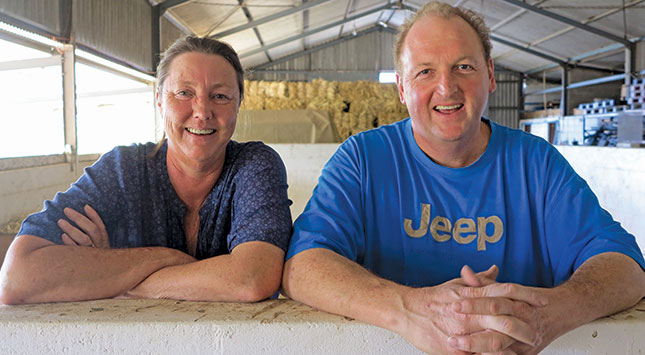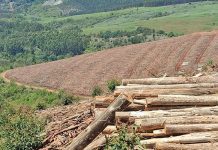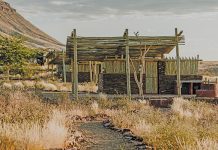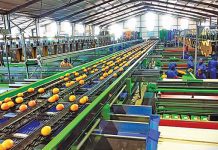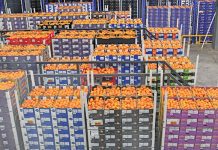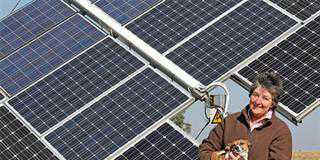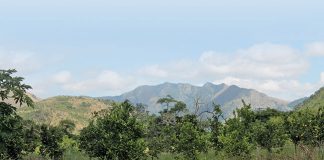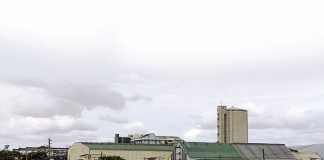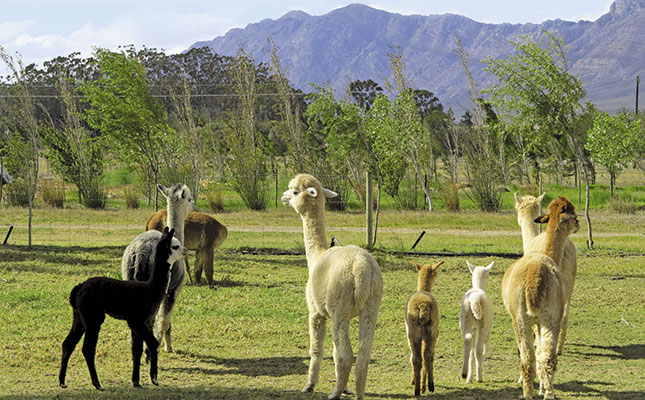
Photo: Jay Ferreira
In 2010, Stephen and Linda Nessworthy established Quenti Alpacas, near Wellington. Offering a range of luxury alpaca products under the Cape Alpaca brand, Quenti Alpacas breeds and sells alpacas, and is the only mill in South Africa that specialises in locally grown alpaca fibre.
SEE ALSO: how commercially viable is alpaca farming in South Africa?
Starting an alpaca farm in South Africa
Stephen and Linda Nessworthy acquired pet alpacas in 2004, as Linda had been fascinated by them since childhood, and the couple greatly enjoyed keeping the animals in their garden in Cape Town.
At the time, they had a specialist food import business. Five years later, they converted their interest in alpacas into a full-time farming operation: they sold their food business, bought a farm in 2010 and started Quenti Alpacas in 2011.
“We’ve always looked to niche markets,” says Stephen, “and with Linda’s fascination with alpacas, this made sense.”
The name Quenti is a South American Quechu word meaning “sunbird”.
Quenti Alpacas started with 11 females and one male, all imported from Chile. The first stud (12 alpacas) was imported in 2009, followed by three more in 2011. They are named Augusto, Intellimani, Michimalongo and Golden Gun.
Quenti is a member of the South African Alpaca Breeders’ Society, which has about 40 members and sets the standards for stud registration. There are now over 150 animals on their 36ha farm.
Striving for the finest alpaca
Linda is in charge of breeding and says she is inspired to breed the ultimate alpaca. “Health is the first priority,” she says, “so I strive for an animal with strength, resilience, and good body structure and proportions.”
She explains that fibre quantity and quality is determined genetically, although good nutrition and husbandry affect the genes’ expression.
“We’ve done skin follicle counts with a researcher in Australia, and he has found a correlation between fineness and the number of hair follicles; the more hair follicles per square millimetre, the finer the fibre and the better its quality.”
As the quality of the fleece determines the quality of spinning, Linda, much like Merino breeders, breeds for exceptional fibre structure and consistency.
Thus far, she has achieved excellent results, with the farm’s fibre averaging just over 20 microns (µm) across all 150 animals, with a range of between 13µm and 28µm. This is equivalent to top quality Merino wool.
Gestation and general care
A hembra (female alpaca) gestates for an average of 340 days and gives birth to a single cria. A mere 17 days after giving birth, the hembra is receptive again.
This means that a hembra is pregnant for 90% of her breeding years, which start at the age of two. Quenti’s heavily pregnant hembras and crias are kept in a camp near the house for about seven months, until weaning.
Thereafter, they are out in the field all day, with shelter available whenever they need it. Stephen and Linda feed their herd a concentrate mix in the morning; this contains crushed oats, grains, pellets and a mineral mix found in South American soil.
They also have ad lob access to oat hay, and graze on grass throughout the day. Stephen says that since they expect a great deal from their alpacas, they supplement their diets.
As alpacas are susceptible to the same diseases that affect sheep, Quenti alpacas are vaccinated against blue tongue virus, Rift Valley fever and Clostridia diseases, among others.
South American soil, unlike Wellington soil, contains a high percentage of silica, which maintains alpacas’ teeth and toenails. To compensate, Linda and Stephen trim the animals’ toenails and file their bottom teeth every six months, when they receive their vaccinations.
Shearing
“Because of Wellington’s severe heat, we shear our alpacas earlier than most other breeders,” explains Stephen. “This shearing normally occurs in the first two weeks of September, as soon as it becomes warmer. It’s no problem if there’s a cold snap as they have good shelter.”
Shearing alpacas is similar to shearing sheep, except that a special alpaca shearing blade is used in order to leave 4mm of fibre on the alpaca to provide insulation. They are also shorn more carefully than sheep, so the process takes longer. This is because fibre preparation actually starts at the shearing stage.
- The ‘firsts’ are shorn initially; these consist of the ‘blanket’ around the main body (the finest fibre).
- The ‘seconds’ are the fibres shorn from the legs and neck.
- The back fibre, from behind the neck to the tail, is the best quality.
Shearing is ideally done in one cutting, so as not to waste fibre. A fleece sample from each alpaca is sent to the Wool Testing Bureau to determine the micron measurement and other characteristics used when batching fibre for processing. This data is invaluable during breeding and selection.
Linda and an assistant shear the alpacas on a customised shearing table. The animal’s feet are strapped down, while a staff member holds the head. The entire process is designed to be as stress-free as possible.
Flock guard, products and export
Alpacas are increasingly popular as flock guards – for several reasons. They have a herd mentality, keeping sheep together so that predators cannot easily attack them.
SEE ALSO: alpacas protecting sheep
They are extremely alert and have a loud alarm call if startled or threatened. Their size keeps them relatively safe from smaller predators, such as jackal and caracal.
Finally, they eat the same food and require the same inoculations.
Alpaca products
Quenti has capitalised on this and breeds and sells alpacas as both sheep guards and pets. It also sells to breeders and offers a stud service.
The operation has a mill and produces yarn for external enterprises, as well as their own. A range of alpaca products is manufactured: baby blankets, beanies, socks, shawls, ponchos, carpets and blankets.
Quenti’s main value-added product is yarn for hand-knitting. Over 95% of its products are natural and undyed, and exported to New Zealand, Australia, Holland, Germany, Finland and Sweden.
The farm, mill and studio are also open for tours and yarn craft workshops. Quenti products trade under Cape Alpaca, and everything is locally produced.
“We make all the yarn, which is knitted by specialist sock knitters. The carpets are handwoven in Cape Town and Somerset West. We machine-knit on the farm, and have highly skilled ladies doing hand-knitting and crocheting too,” says Linda.
Apart from product manufacturers, Quenti has three employees who assist with general farm work and animal husbandry, such as teeth and nail care, and one employee who helps in the mill.
“We’re the only mill in South Africa specialising in locally grown alpaca fibre. The other two mills commission spin using imported fibre,” Linda says.
The mill was established three-and-a-half years ago. It includes a Canadian-made mini mill for small batches.
Industrial equipment is imported from Europe, as local mills do not sell equipment, in an attempt to prevent competition.
“It’s older equipment which works well for alpaca, as the fibre doesn’t perform well at high speed,” explains Linda.
Learning and planning
According to Linda, alpaca is in a class of its own and is locally most comparable to kid mohair. “But mohair is very fluffy, whereas alpaca is sleek.” She says that their greatest challenges were learning to process good quality yarn and understanding how to breed for best results.
“Every calamity has been a learning curve. There has been a lot of ruined fibre and broken equipment, but it’s necessary for learning. To have had a vision of what is possible, and to see it live, is our success.” Linda plans to produce even better quality yarn, and to achieve enough fibre volume to shear every eight months, rather than every 12 months.
Phone 021 873 6242 or email [email protected]. Visit www.quentialpacas.co.za.
This article was originally published in the 22 April 2016 issue of Farmer’s Weekly.

